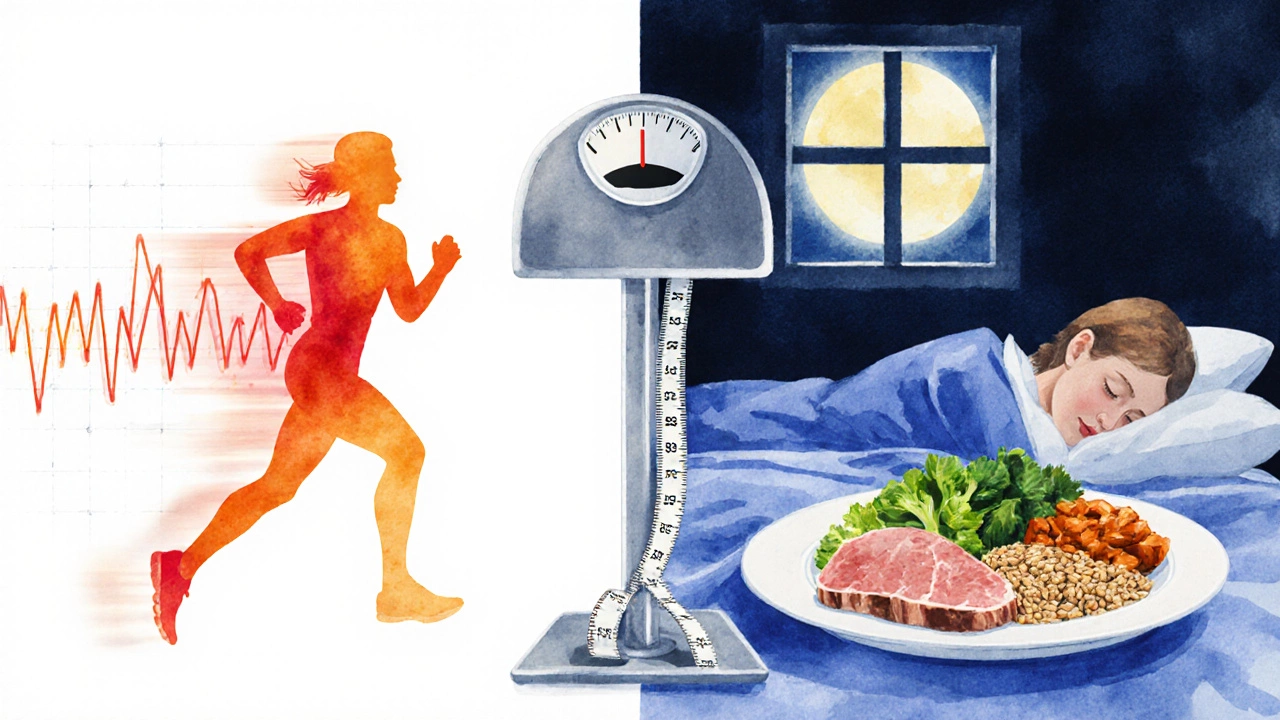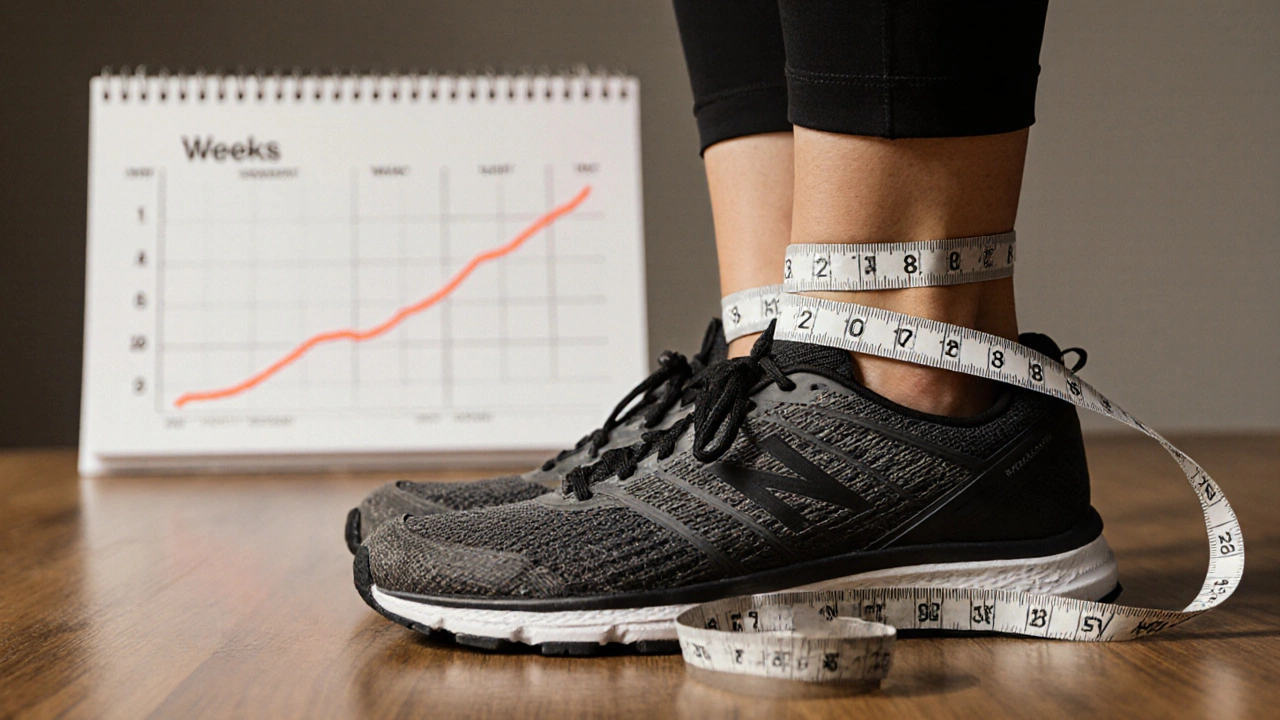Will Running Reduce Belly Fat? The Real Science Behind It

Calorie Deficit Calculator for Belly Fat Loss
Running creates a calorie deficit which is essential for belly fat loss. Calculate your daily deficit and see how much running is needed.
Note: Fitness trackers often overestimate calories burned by 20-40% - use these calculations as a realistic estimate.
Your Results
Important Notes
1. Running alone isn't enough - combine with protein-rich foods and quality sleep for best results.
2. Fitness trackers overestimate calories burned by 20-40% - use this calculator as a more realistic estimate.
3. Consistency matters more than intensity - 30 minutes of running 5 days/week is better than one 90-minute session.
Want to lose belly fat? You’ve probably heard that running is the answer. But does it actually work? And if it does, how much should you run, and what else do you need to do? Let’s cut through the noise.
Running burns calories - that’s the first step
Running is one of the most effective ways to burn calories in a short amount of time. A 70kg person running at 8 km/h for 30 minutes burns around 300-350 calories. That’s roughly the same as a large banana and a cup of coffee. Sounds simple, right? But calories burned ≠ fat lost.
Here’s the catch: your body doesn’t pick where to burn fat. You can’t target belly fat by doing crunches or running more laps. Fat loss happens system-wide. When you create a calorie deficit - burning more than you eat - your body pulls energy from fat stores all over, including your midsection. Running helps create that deficit. But if you’re eating more after your run, you’re undoing the work.
How much running do you actually need?
There’s no magic number. But research from the American Journal of Physiology in 2023 showed that people who ran at least 150 minutes per week (about 20-25 minutes a day, five days a week) lost more visceral fat - the dangerous fat around organs - than those who ran less. Those who ran 250+ minutes per week lost even more, especially around the abdomen.
But here’s what most people miss: consistency matters more than intensity. Running three 30-minute sessions a week, even at a slow pace, beats one 90-minute sprint every two weeks. Your body adapts to steady effort. It doesn’t respond well to sporadic bursts followed by days of sitting.
Start with three runs a week. Add a fourth if you feel recovered. Don’t push for speed right away. Focus on time on your feet. Your goal isn’t to run a marathon - it’s to create a sustainable habit that keeps burning fat over months, not weeks.
Running alone won’t erase belly fat
Let’s be clear: running is a tool, not a cure. If you’re eating a lot of processed snacks, sugary drinks, or large portions, running won’t fix that. Belly fat builds up over time from excess calories, stress, poor sleep, and insulin spikes. You need to address all of it.
Studies from the University of Cambridge in 2024 found that people who combined regular running with a diet high in protein and fiber lost 2.5 times more belly fat than those who only ran. Why? Protein keeps you full longer. Fiber slows digestion and reduces blood sugar spikes - both of which lower fat storage.
Here’s what to eat more of:
- Lean meats, eggs, tofu, Greek yogurt
- Broccoli, spinach, Brussels sprouts, beans
- Whole grains like oats, quinoa, brown rice
- Healthy fats: avocado, nuts, olive oil
And what to cut back on:
- Sugary coffee drinks
- White bread, pastries, packaged snacks
- Alcohol - especially beer and cocktails
- Large portions, even of healthy foods
You don’t need to diet. Just eat more real food and less junk. Your body will respond.

Timing matters - when you run affects fat burning
There’s a reason some people swear by morning runs on an empty stomach. Fasted cardio - running before eating - can slightly increase fat oxidation. One 2023 study in the Journal of Nutrition and Metabolism found that people who ran before breakfast burned 20% more fat during the session than those who ran after eating.
But here’s the twist: total fat loss over the week was nearly identical. The difference? People who ate before running had more energy, ran longer, and burned more total calories. That often outweighed the slight fat-burning advantage of fasting.
So what’s better? Run when you can stick with it. If you’re too tired to run after work, do it in the morning. If you’re hungry first thing and crash mid-run, eat a banana and try later. The best running plan is the one you don’t quit.
What about high-intensity running?
HIIT - short bursts of sprinting followed by walking - burns more calories in less time. A 20-minute HIIT session can burn as much as a 40-minute steady run. It also boosts your metabolism for hours after you stop (called EPOC).
But HIIT isn’t for everyone. If you’re new to running, trying to sprint every other minute can lead to injury or burnout. It also spikes cortisol, the stress hormone, which can make belly fat harder to lose if you’re already stressed or sleep-deprived.
Try this: once a week, replace one of your regular runs with a 20-minute interval session. For example:
- Warm up with 5 minutes of easy jogging
- Sprint for 30 seconds
- Walk or jog slowly for 90 seconds
- Repeat 6-8 times
- Cool down with 5 minutes of walking
That’s it. You don’t need to do it every day. Just add it in to shake things up.

Why your belly fat isn’t going away - common mistakes
You’re running, eating okay, but the belly fat won’t budge? Here’s what’s probably going wrong:
- You’re overestimating calories burned. Fitness trackers often overstate calorie burn by 20-40%. Don’t reward yourself with a muffin after a 5K.
- You’re not sleeping enough. People who sleep less than 6 hours a night store more abdominal fat, even with the same diet and exercise. Aim for 7-8 hours.
- You’re too stressed. Chronic stress raises cortisol, which tells your body to hold onto belly fat as a survival mechanism. Try walking, breathing exercises, or meditation - not just running.
- You’re only doing cardio. Muscle burns more calories at rest. Add two days of bodyweight exercises - squats, push-ups, planks - to your week. You don’t need weights. Just consistency.
What to expect - and when
Most people start noticing changes in their waistline after 4-6 weeks of consistent running and better eating. You won’t see a six-pack. But your pants will feel looser. Your waistline will shrink. Your energy will improve.
Don’t weigh yourself every day. The scale doesn’t show fat loss - it shows water, food, and muscle. Take measurements. Take photos. Notice how your clothes fit. Those are the real signs of progress.
After 12 weeks, people who stuck with a simple plan - three to four runs a week, protein-rich meals, and 7+ hours of sleep - lost an average of 2.8 cm from their waistline. That’s more than a full pant size.
Final answer: yes, but only if you do it right
Running will help you lose belly fat - if you pair it with decent eating, enough sleep, and stress management. It’s not a magic bullet. But it’s one of the most reliable tools you have.
Start small. Run three times a week. Walk more on other days. Eat more protein and veggies. Sleep like your life depends on it. And don’t expect overnight results. Belly fat took months to build. It’ll take months to lose.
But if you stick with it, you’ll not only lose the fat - you’ll feel stronger, calmer, and more in control. And that’s worth more than any number on a scale.
Can you lose belly fat by running every day?
Running every day isn’t necessary - and can even backfire. Your body needs recovery. Overtraining raises cortisol, which can make belly fat harder to lose. Three to five runs a week, with rest or walking on other days, is more effective and sustainable.
How long does it take to see results from running for belly fat?
Most people notice their waistline shrinking after 4-6 weeks of consistent running and better eating. Visible changes in belly fat usually show up between 8-12 weeks. Progress is gradual - focus on how your clothes fit, not the scale.
Is walking better than running for belly fat loss?
Running burns more calories in less time, so it’s more efficient. But walking still helps - especially if you do it daily and combine it with good eating. For someone who can’t run due to injury or weight, walking is a great starting point. The key is movement over time, not intensity.
Does running make your stomach bigger?
No - running doesn’t make your stomach bigger. If your belly looks larger, it’s likely due to bloating, water retention, or increased muscle tone under the fat. Running reduces fat, not builds it. If you feel bloated, check your diet - too much salt, carbonated drinks, or dairy can cause temporary swelling.
Should I run on an empty stomach to burn more belly fat?
Fasted running may burn slightly more fat during the workout, but total fat loss over the week is about the same as running after eating. The real benefit is consistency. If you feel weak or dizzy without food, eat a small snack like a banana or a handful of nuts before your run.